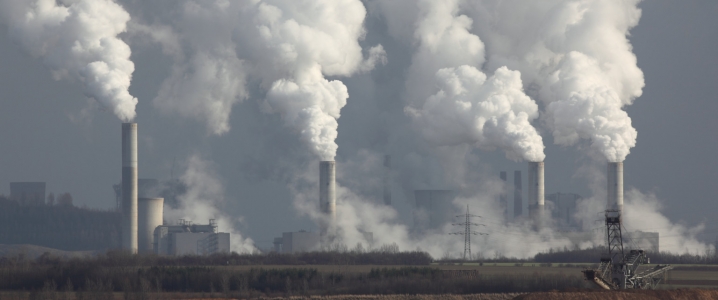Meeting the Paris Agreement target of limiting global climate change to a maximum of just 2°C of warming will be no easy task. As the global population and middle class continue to expand rapidly, so too does our demand for energy and therefore our emissions as well. In order to nip climate change in the bud, a multi-faceted approach is vital. As a global community we must not only plant more trees, reduce emissions, and turn toward renewable resources instead of traditional fossil fuels, we must also research ways to undo some of the damage that has already been done and clean up our ozone layer however we can.
Now, scientists from the RMIT University in Melbourne, Australia have published findings that show a scientific breakthrough that has the potential to be able to pull carbon dioxide, the most notorious of all greenhouse gases, directly out of the air by converting into a solid carbon at room temperature. What’s more, this revolutionary process is all done with a minimal amount of energy consumption. While this new technology has massive potential and gives new hope to the endeavor of tackling climate change, making it work on a large scale will be challenging, to say the least.
Researchers have discovered several solid metal catalysts over the last few years that have the ability to convert carbon dioxide into solid carbon, but the distinction between these earlier discoveries and this newest breakthrough is that those catalysts required high temperatures--above 600°C--to function. Producing these kinds of temperatures comes with a lot of drawbacks, not the least of which are energy and money. These earlier catalysts had other negative attributes as well, becoming less powerful the more carbon dioxide that they converted into solid carbon, making them unsustainable and hard to work with. Related: Is This The End Of A Record-Breaking Oil Rally?
It was precisely these challenges that caused Dorna Esrafilzadeh and Torben Daeneke, chemists at Melbourne’s RMIT University to shift their focus to a new class of catalysts that are made from metal alloys that maintain a liquid state at room temperature. Scientific journal Nature Chemistry published the findings of one such catalyst back in 2017, a compound that consists of catalytically active palladium mixed with liquid gallium. This catalyst, to be clear, does not function with carbon dioxide, but allowed palladium to continue conversion of low-value hydrocarbons into higher value ones, from alkanes to alkenes, without slowing. The relevance of this breakthrough when it comes to greenhouse gases is that it inspired Esrafilzadeh, Daneneke and their team to look into whether a similar catalyst could possibly work for carbon dioxide--a breakthrough that would have amazing potential for battling climate change.
Now, the researchers have made the first steps of that breakthrough. The research is still in its early stages, and will require a lot more refining, but the team of scientists has already successfully converted CO2 into solid carbon. The process includes an energy-conducting alloy of gallium, indium, and tin that is liquid at room temperature, as well as a small amount of catalytically active cesium and water. A wire is then inserted into the liquid metal and pure carbon dioxide is piped in before a jolt of electricity is sent through the wire and into the mixture. At this point the carbon dioxide diffuses into the liquid metal mixture and is converted into solid carbon, making the venture a success up to this point.
While there is still much more research and refining to be done and the RMIT University team says that the exact mechanism of the reaction is not yet clear, the results show incredible promise. If the reaction could be tweaked and scaled up to convert carbon dioxide straight out of our air, it could have truly world-altering implications. One of the research leaders Torben Daeneke says, “While we can’t literally turn back time, turning carbon dioxide back into coal and burying it back in the ground is a bit like rewinding the emissions clock.”
By Haley Zaremba for Oilprice.com
More Top Reads From Oilprice.com:
- Oil Prices Could Soar On Trade War Truce
- BP CEO Dudley: U.S. Shale Is ‘A Market Without A Brain’
- Saudi Arabia Aims To Become Large Natural Gas Exporter


















